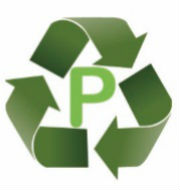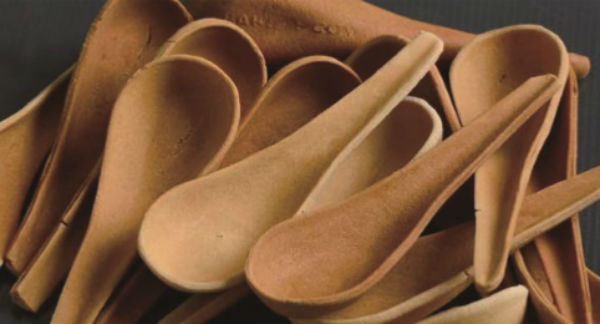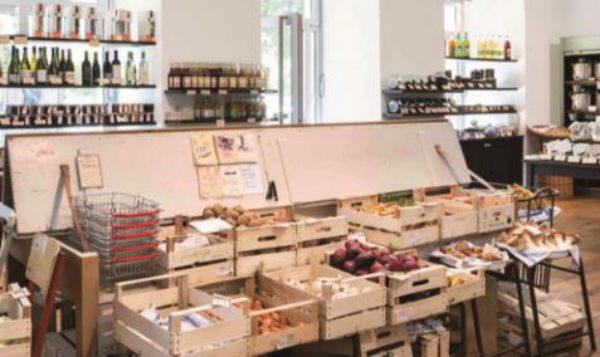Recycling, upcycling, and downcycling: there are numerous amounts of approaches used in order to make society a better, cleaner, and safer place for all to live. Speaking of which, did you Kingos enjoy our article last month on upcycling? Upcycling helped deal with environmental issues in its own particular function, which was to change the identity of a product and make it have more value than its previous form. Likewise, in the same sense, precycling helps in making our ecosystem a better place by hindering away all the objects that pollute our society in the first place. The Sungkyun Times (SKT) introduces the idea of precycling and observes the recent practices to portray the significance of this new concept.
What is Precycling?
Concept

The definition of precycling can be seen just by examining the context itself. The word is a combination of the prefix “pre” and the word “recycling,” simply referring to the practice in which items containing recyclable materials are not brought in and therefore helps in reducing waste. In professional terms, precycling, according to Dictionary.com, means “to make purchasing decisions that will ultimately delay, reduce, or eliminate the need to recycle or dispose of waste.” Precycling, in reference to the Environmental Protection Agency (EPA), is also seen as the best solution in helping to reduce waste. Precycling’s distinctive concept resides with the notion of the four R’s, which stand for Repair, Recondition, Remanufacture, and Refuse. Repair deals with correcting a specified fault and quality to limit the propensity to create unnecessary waste. For example, repairing a ripped book rather than throwing it away and buying a new one falls into this category. Recondition focuses on rebuilding a primary segment of a product. For instance, refilling an old battery rather than throwing it away is reconditioning it. Remanufacturing refers to the total disassembling of an item and reconfiguring its restoration with the use of different ingredients. Getting rid of Styrofoam packaging and adopting mushroom packaging is an example. Lastly, refuse stands for simply denying to buy products that are bound to create wastes such as plastic, paper, and aluminium. Although the use of precycling can be very advantageous to our society, one factor that needs to be considered is that precycling can be only performed through the actions and choices of an individual.
Comparison
The idea of precycling can be confusing, as it may seem to overlap with similar concepts such as recycling, upcycling, and downcycling. However, these terms are not to be mistaken with one another. As mentioned above, precycling deals with avoiding materials before they become waste themselves. Recycling, on the other hand, works to avoid environmental pollution through certain actions such as collecting and using energy to recreate the same product. However, in recycling, energy is needed, and the process cannot function without it. For example, a plastic bottle can be recycled in to a new plastic bottle. Upcycling is the practice of changing the identity of a product into one with a greater value to help reduce waste and pollution. For instance, changing an old rusty tire into a bucket is upcycling. Downcycling is another technique that helps the environment by using wastes or unused items to create a low quality product. As an example, it is possible to change plain paper into a low quality cardboard.
Application of Precycling in Our Society
Edible Spoon

The edible spoon is one of the most well-known examples of precycling. The spoon’s purpose is to provide an alternative solution to disposable spoons that contribute heavily to waste. Researcher Narayana Peesapaty created the edible spoon. Peesapaty, seeing the lack of silverware and the need for ecofriendly products, developed the edible spoon in the name of precycling. Although Peesapaty first created the edible spoon in 2010, it did not receive much attention until early this year, when the innovation boomed through the use of social networking systems. The secret behind the edible spoon is that it is formed out of pure millet, rice, and wheat flours with no preservatives, making it 100 percent safe and edible. It also comes in a variety of flavors, including sugar, ginger-cinnamon, ginger-garlic, cumin, celery, black pepper, mint-ginger, and even carrot-beetroot. With its precyclable feature, the edible spoon is able to decompose within three to five days after use and also has a shelf life of three years. As of now, over 1.5 million spoons have been sold and can be seen as winning the race against disposable spoons due to its ethical intentions and low cost of 100 spoons for $4.00. The edible spoon has surely shaken the standpoint of precycling for the better.
Zero Markets
Many zero markets, better known as anti-packaging markets, have opened in European countries. Zero markets can be seen as one of the recent prime cases of precycling due to their wastefree and environmentally-friendly nature. Although the concept of zero markets has been available ever since the late 1990s, it had not achieved widespread awareness until recent times. These shops portray precycling by creating a whole system of anti-waste themes all across the market and also through the manifestation of precycling fused with modernism in interior and architecture. For example, all products are distributed in glass or wooden works, and even the interiors themselves are created only with ecofriendly materials, which appeals to many customers. Moreover, the majority of these markets use glass bottles to take home liquid substances and use baskets or pockets to hold the solid substances that consumers purchase, making them that much more reluctant in creating waste. Zero markets have also been complimented for verifiable fresh, unpackaged products, whereas in regular markets, the condition of the product would be hidden by packaging. There is no doubt that zero markets have lit up another aspect of precycling and will continue to grab the attention of many modern customers.

Mushroom Packaging
The phenomenon of mushroom packaging has astonished many people due to its precyclable and ethical functions. Mushroom packaging is a type of packaging made up of mycelium and corn stalks that is used to replace plastic packaging. Mushroom packaging was developed by Eben Bayer, CEO of Ecovative Corporation, with the idea of precycling and making our environment a better place to live in. Mushroom packaging has been praised so exuberantly that even TED Talk, one of the most well-known technology, entertainment, and design conferences, held a show with the title of “Are Mushrooms the New Plastic?” Mushroom packaging can be easily seen as a perfect alternative for plastic packaging because it uses waste-free material and is also sturdy, just like regular plastic packaging, and can last up to 90 days. The plastic packaging and Styrofoam that people use today for packaging are only clean for several days or months, and because companies just reuse them, we can bluntly assume that we are covering our packages with dirty trash itself. Moreover, plastic packaging is usually not disposed of properly and remains in our environment for many years. However, the adoption of mushroom packaging, according to the EPA, can help reduce plastic packaging and cut down on waste production up to 30 percent in the United States. It also helps with nature because even when it is not disposed of properly, the rich nutrients that are involved in mushroom packaging would serve as a fertilizer for soil, making it advantageous to our society.

Prospects of Precycling
Problems Although there are many conflicts that limit the extension of precycling, the main problem is that precycling is held accountable only through the choice and actions of people themselves. Although the amount of precycling has increased significantly compared to the past, it still encounters troubles because not many individuals are willing to make the choice of practicing precycling. In society, ethically speaking, individuals may think about the aspect of precycling where they would fix, recondition, remanufacture, or refuse in order to make society a better place for all. In reality, however, people are more focused on the economic aspect of living, which advocates getting rid of the unnecessary and buying new products that end up making more waste. In the same sense, because consumers in Korea have economic aspects as their core foundation, the adaptation of precycling, therefore, cannot be seen easily in this country.
Anticipation for the Future
There are many anticipations to expect through the continual practice of precycling. First and most obviously, the amount of waste created all over the world would reduce greatly and allow all nations to save energy and resources. Also, if precycling is to improve and innovate, it may become a direct part of our lives where people use its functions but also allow it to be friendly towards the environment, which would make the world a better place for all to live. Lastly, if the practice of precycling continues, it will help reduce pollution in our environment, allowing for climate change and global warming to subside and hopefully provide a solution to many natural disaster issues.
WAYS TO PRACTICE PRECYCLING IN OUR DAILY LIVES
❶ Bring reusable bags to the store with you. Cloth or paper will do! ❷ Buy products with the least amount of packaging or none at all. Items packed in multiple containers may look nice, but they are a waste! ❸ Buy products packed in recycled packaging. If you have to use a container, it might as well be green. Additionally, help support green corporations. (Important: Make sure you look for the recycled symbol.) ❹ Don’t buy disposable items (plates, cups, pens, diapers, batteries, etc.). They only fill the landfill more. ❺ Buy less paper towels and napkins or none at all. Use cloth ones instead! ❻ Read labels for ingredients. Stay away from chemicals that harm our plant and animal life and poison our land.
There is a Native American Proverb saying, “The frog does not drink up the pond in which he lives.” This proverb serves to signify a warning against the depletion of resources and the way people tend to abuse the environment. Likewise, we as a society should be aware of the condition of our environment and consider the well-being of it for our future’s sake. Although precycling has a long way before it is implemented perfectly in our society, the SKT hopes that this article was able to show one way to achieve a better ecosystem and that it can act as a trigger in helping to create a better, cleaner, and safer environment.
